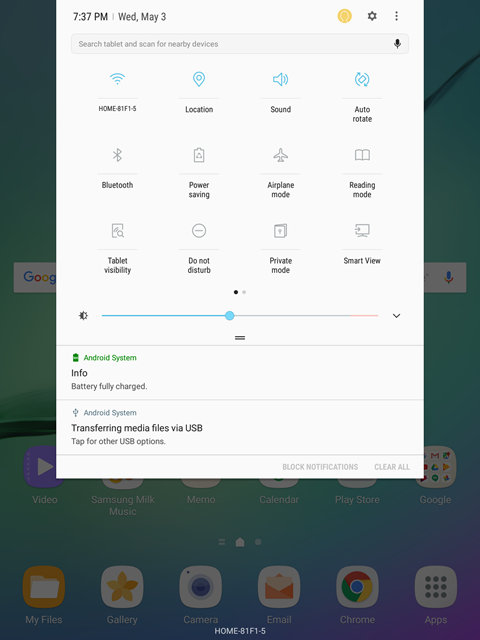Eric Butow :: 13 Jul 2017 :: Business, Tech

I recently wrote a review of a potential client’s WordPress website. This website has a lot of good things going for it: It looks inviting, its mobile version looks good, and it has the right amount of information for its intended audience.
I also found a number of issues with the site for the client to consider:
- The page title of the site and the site address were different from the actual name of the business. That may cause confusion with viewers, not to mention search engines.
- The site descriptions in the site code didn’t have any information about the site. Instead, the descriptions mentioned Facebook and WordPress. These descriptions are not search-friendly.
- It should come as no surprise that the site didn’t have any WordPress SEO plugins, so it’s harder for search engines to find the site.
- The social media icons were a bit too small on the mobile site. This makes the site a little harder to use.
- Only one of the social media icons went to the actual social media profile. When you tap on any of the other icons, they all go back to the website.
- The copyright date is 2014. Not updating your copyright makes your site look outdated…and may convince people not to return.
Do any of these issues look familiar to you when you view your website?
If so, don’t wait to update. Use whatever reason you want. The fact that we’re now in the second half of 2017 is a good motivator. Catching up with — or beating — your competition is another.
Eric Butow :: 25 May 2017 :: News, Tech
The past few weeks have been busy for me as I add or renew personal and business memberships. I also dropped my membership in the Better Business Bureau (BBB). The reason for the latter has to do with passwords and privacy.
I joined the BBB in 2011. Last year, the BBB posted my unhidden BBB password in my renewal e-mail message. For some time before then, news outlets documented the lack of privacy controls in e-mail messages. What’s more, some pieces of my BBB account password were in other passwords I use to access other websites.
 I updated a lot of my passwords quickly. When I was done, I expressed my concern to the head of the BBB office in Sacramento. The head of that office assured me that such transmission would never happen again, and that a note about this would be put in my member file.
I updated a lot of my passwords quickly. When I was done, I expressed my concern to the head of the BBB office in Sacramento. The head of that office assured me that such transmission would never happen again, and that a note about this would be put in my member file.
After I renewed with the Better Business Bureau in March this year, I received a thank you e-mail message. This message once again contained my user name and my entire unhidden password. I promptly e-mailed the head of the Sacramento BBB office about this. Her e-mail response explained that the person who sent the message was a new employee and he didn’t read my file.
Her response also contained the entire original message with my unhidden password. So, now I knew the previous message wasn’t an innocent mistake. I responded to her in a separate e-mail message to prevent further transmission of my password, and told her that either BBB staff didn’t train its staff correctly or my “member file” didn’t exist. She apologized again and refunded my dues quickly, but I won’t be a Better Business Bureau member anytime soon.
Though I look at and change my passwords on a regular basis, this incident happened in between those regular checks. I neither appreciated having to put other work aside to check and change more passwords nor the anxiety.
So, I want to share this cautionary tale with you and offer some ideas if you’re concerned about passwords, too.
If you’re thinking of sending passwords via e-mail, or even document attachments with important information like your signature, there are three ways I protect my documents. You may want to consider these strategies as well:
- Your e-mail software may offer the ability to send encrypted messages, where both you and the recipient need a “key” to open the message. If you use Microsoft Outlook, you can get instructions how to do that on the Office help website.
- If you use Adobe Acrobat, encrypt your PDF document with a password that the recipient knows.
- You can also use a file compression program such as 7-Zip to not only compress the file but also require a password to open the compressed file.
In the latter two cases, you may need to talk about what password you want to use and keep the references reasonably cryptic. For example, you may tell the recipient to use the first few letters of a word combined with the last three digits of a number that both of you know.
I hope this helps. Please let me know if you have any questions or further thoughts. In the meantime, I hope you have a happy and safe Memorial Day weekend.
Eric Butow :: 11 May 2017 :: Tech
 Last month, Samsung rolled out the Android 7.0 (Nougat) update for the Galaxy Tab S2. Samsung introduced the Galaxy Tab S3 with Nougat in March, but if you think the Tab S2 is just fine, then a free upgrade to Nougat on your Tab S2 may be what you’re looking for. If you upgraded your Tab S2 to Nougat, or you’re interested in upgrading, I’ve written a new article about the biggest features in Nougat. You can click the link on the right side of this page, and this PDF-format article is free to read.
Last month, Samsung rolled out the Android 7.0 (Nougat) update for the Galaxy Tab S2. Samsung introduced the Galaxy Tab S3 with Nougat in March, but if you think the Tab S2 is just fine, then a free upgrade to Nougat on your Tab S2 may be what you’re looking for. If you upgraded your Tab S2 to Nougat, or you’re interested in upgrading, I’ve written a new article about the biggest features in Nougat. You can click the link on the right side of this page, and this PDF-format article is free to read.
The latest chatter on social media says a Nougat update for the Galaxy Tab A is imminent. However, it’s less clear if Samsung will update the original Galaxy Tab S with Nougat. The SamMobile website is a great resource for the latest Samsung firmware updates and other Samsung news.
This Tab S2 article will be the last I produce for a while. Next week, I’ll start writing Instagram for Business for Dummies for Wiley with my co-authors Corey Walker and Jenn Herman. If all goes well, that book will be on store shelves for the holiday season. At the very least, the book will be ready for next February’s Social Media Marketing World conference.
While I’m writing the Instagram book, I don’t plan to disappear as I did in March. I’ll have news about the book and other interesting stuff to share. I want to explain why my business is no longer a member of the Better Business Bureau. I have some thoughts about local restaurants if you’re coming up to Amador County sometime this summer. I’m also going to pester some of my co-authors of other books to contribute articles and let you know what they’re thinking about.
In the meantime, have a prosperous Friday and a wonderful Mother’s Day weekend.
Eric Butow :: 8 May 2017 :: Tech
I’ve used RoboHelp since 1996 (hard to believe that’s 21 years ago, isn’t it?) and I’ve also developed several online courses for Adobe’s online help creation software for previous versions. Now my new course for the latest version, RoboHelp 2017, is available on Udemy.
This course has 116 lectures and takes about 5 hours if you go through it from beginning to end. The course curriculum is broken into 13 “chapters” that include the following topics:
- How to navigate the RoboHelp window
- Creating a new help project
- Formatting your help project
- Designing your topics
- Adding links
- Building forms and tables
- Inserting graphics and multimedia into your topics
- Going further with variables, tags, and scripts
- Organizing your project using an index, glossary, search, and TOC
- Generating and reviewing online help projects
 Because you have unlimited free access to the course after you purchase it, you can return to the course whenever you want to get a refresher about one or more topics.
Because you have unlimited free access to the course after you purchase it, you can return to the course whenever you want to get a refresher about one or more topics.
The course retails for $140, but Udemy frequently offers promotional discounts for all its courses. The course has a 30-day money-back guarantee, too.
Go to the Udemy website to read all about the course, review the course outline, watch a brief intro video, check out current discounts, and purchase the course. I’ve also developed courses for two older versions, RoboHelp 2015 and RoboHelp 11, in case you’re still using those versions and need help using them.
RoboHelp is a great tool for technical writers and software developers to create and offer help on a variety of platforms, and you can learn more about it on Adobe’s website by clicking here. I also updated the Adobe RoboHelp Wikipedia page with a lot of new information about RoboHelp’s history and capabilities.
I had a productive weekend, and I hope you had a great weekend, too. Have a productive week and a prosperous rest of your May.
Eric Butow :: 25 Apr 2017 :: Tech
 I’m back with a new article about using Android 7.0, called Nougat, on the Galaxy S7. Samsung released the Galaxy S8 and the Galaxy S8 Plus last Friday, and the media reaction has ranged from good to meh. This is a far cry (or at least a cry) from the universal accolades bestowed upon the Galaxy S7 and S7 Plus.
I’m back with a new article about using Android 7.0, called Nougat, on the Galaxy S7. Samsung released the Galaxy S8 and the Galaxy S8 Plus last Friday, and the media reaction has ranged from good to meh. This is a far cry (or at least a cry) from the universal accolades bestowed upon the Galaxy S7 and S7 Plus.
If you’re not encouraged to upgrade to the Galaxy S8, but you still want the advantages of Nougat on your S7, good news: All the major carriers have upgraded to Nougat. If you recently upgraded, or if you’re thinking about it, download my new PDF-format article about using Nougat on your Galaxy S7. The link is on the right side of the blog’s home screen. It’s a long article that has a lot of information about the new features, but it has plenty of screenshots, too. You don’t have to be a reader of My Samsung Galaxy S7 to benefit. And it’s absolutely free to download and read.
I think the weather here in northern California has played a big role in my thought that it hasn’t been two months since I last posted here. The weather here hasn’t changed all that much — days have been more rainy and cloudy than sunny. But there have also been some important updates to the Divi Builder, which is the WordPress app I use to design this blog. That required me to set aside some time for updating the server. I want to thank my Blogging to Drive Business co-author, Rebecca Bollwitt, and her husband John for their help in updating the version of PHP to accommodate the requirements of the new version of Divi Builder.
I don’t like to post blogs or updates constantly when there isn’t any news, but I may have some news soon about books. It won’t be a book about the Galaxy S8, as Que has decided to stop publishing books about smartphones. But this new book will be exciting and I hope to get a chance to write it with a pair of co-authors. And I’m also working on a new client’s website, so May is looking busy. I’ll have more soon.
Eric Butow :: 7 Feb 2017 :: Tech
 Google updated its Chrome browser to version 56 a couple of weeks ago. Chrome is still the most popular browser available with about 52% market share as of January 2017 according to StatCounter (gs.statcounter.com). This new version contains some important security information that will affect users and especially companies that host websites (that is, practically every business).
Google updated its Chrome browser to version 56 a couple of weeks ago. Chrome is still the most popular browser available with about 52% market share as of January 2017 according to StatCounter (gs.statcounter.com). This new version contains some important security information that will affect users and especially companies that host websites (that is, practically every business).
The biggest change to version 56 is that you’ll see the words “Secure” or “Not Secure” to the left of the website address in the Address bar. A secure page is one that uses a SSL (Secure Sockets Layer) certificate to establish an encrypted connection between your web browser and the server that hosts the website. For now, you’ll only see “Secure” or “Not Secure” when you’re on a page that asks you to enter a password or credit card information. However, in the coming weeks as Google releases more minor updates to Chrome, you’ll see the “Secure” and “Not Secure” messages in the Address bar for every website.
How do you know if your site is secure or not in Chrome? To the left of the website address in the Address bar, you’ll see a little information icon (it’s the letter i in a circle). Click on the information icon to display a window underneath the Address bar with information about your site. At the top of the window, you’ll see a message that tells you if your website is secure or not.
If your business website isn’t secure right now, then your current and potential customers may wonder if your company is worth doing business with because your website isn’t secure. So this is a good time to check with your web hosting company and find out if you need to change your hosting plan to one that includes SSL encryption. Unfortunately, this will likely entail a small cost increase, but the peace of mind for you and your customers will be worth it.





